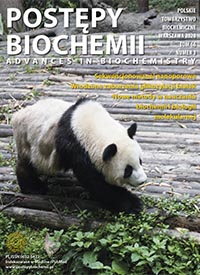Nanopore Sequencing and its Application in Biology
DOI:
https://doi.org/10.18388/pb.2020_328Abstract
Nanopore sequencing is a third generation sequencing technique. It involves the electrophoretic transport of nucleic acids through the protein channels of nanometer size, called nanopores, followed by deciphering their nucleotide sequence, based on the changes in the measured electrical signal. The nanopore technique allowed for remarkable extending the sequencing read lengths and enabled direct sequencing of native DNA and RNA molecules. As a result, within just a few-year period since the release of the first nanopore sequencer, it has become one of the leading sequencing technologies. The broad scope of nanopore sequencing applications includes, in particular, genome assembly, structural variation studies, identification of nucleic acid chemical modifications and transcript alternative splicing studies. Portable, easy to operate, nanopore sequencers are also increasingly used in epidemiological and agricultural research to quickly identify and monitor the spread of pathogenic bacteria and viruses.
Downloads
Downloads
Published
Issue
Section
License
Copyright (c) 2020 Advances in Biochemistry

This work is licensed under a Creative Commons Attribution 4.0 International License.
All journal contents are distributed under the Creative Commons Attribution-ShareAlike 4.0 International (CC BY-SA 4.0) license. Everybody may use the content following terms: Attribution — You must give appropriate credit, provide a link to the license, and indicate if changes were made, ShareAlike — If you remix, transform, or build upon the material, you must distribute your contributions under the same license as the original. There are no additional restrictions — You may not apply legal terms or technological measures that legally restrict others from doing anything the license permits.
Copyright for all published papers © stays with the authors.
Copyright for the journal: © Polish Biochemical Society.




